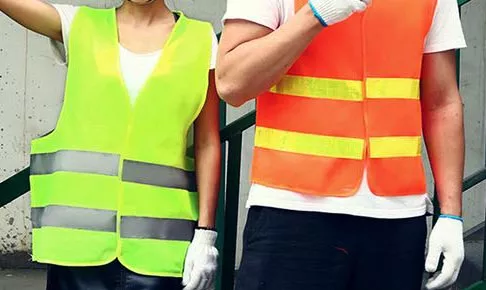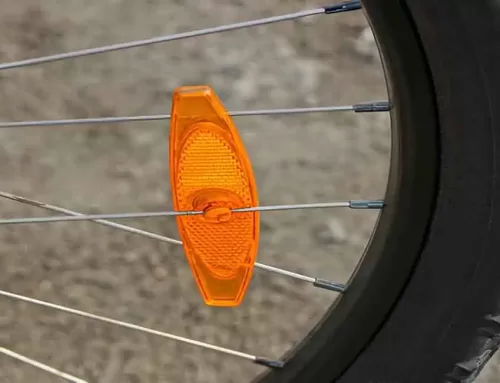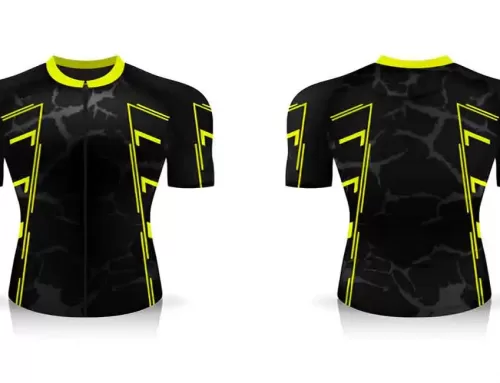Are Safety Vest Required By OSHA?

OSHA requires many different types of safety vests, but HSVA and Reflective vests are specifically exempt. Below is a guide to these vests, including when they’re required, and how to find them. The OSHA standard for safety vests is a Class I, Class III, and HSVA. Each type of safety vest has different requirements and benefits, and we’ll discuss these briefly.
Reflective vests are not required by OSHA
The American National Standards Institute, the organization that oversees conformity standards in the U.S., created the American National Standard for High-Visibility Safety Apparel. OSHA oversees the safety and health conditions of workplaces across the country. While OSHA does not require workers to wear safety vests in every profession, there are many instances in which they may be necessary. Some industries require workers to wear high-visibility safety vests, while others do not.
OSHA has consistently claimed that reflective vests are not required under the General Duty Clause. The standard also cites a judicial precedent for requiring workers to wear reflective vests on highways. In fact, reflective vests are only required for non-flaggers. This precedent reflects industry practice and recognizes the importance of having a visible safety vest at all times. However, in cases where reflective vests are required, employers should contest them.
There are two types of safety vests: Class 1 safety vests and Class 2 safety vests. Class 1 vests incorporate a minimum amount of high-visibility material and are appropriate for work away from roads. Class 2 safety vests require a minimum of seven hundred square inches of high-visibility material and are not acceptable for work at night. Class 3 vests must have reflective tape on their sleeves and have an overall silhouette of 13.3 feet wide.
Safety in high-risk work environments requires a coordinated effort from everyone. Reflective vests should be worn by flaggers and workers at highway work zones. Additionally, OSHA enforces the “general duty clause” requirement that states that employers must provide a safe workplace. However, reflective vests are not required by OSHA in all workplaces. They should be worn based on ANSI class specs.
Class 1 safety vests are required by OSHA
The American National Standards Institute (ANSI) has been responsible for creating conformity standards for every industry in the U.S. The ANSI’s High-Visibility Safety Apparel standard is mandatory for certain industries and occupations. This standard was created to protect workers in dangerous environments and is the basis for OSHA’s requirements for safety vests in various professions. Workers must wear high-visibility safety vests while they are working at night, in bad weather, or in otherwise dangerous situations.
Workers with low-risk jobs should wear class 1 safety vests. They should work in low-traffic areas that are far from moving vehicles. These include construction workers, warehouse workers, delivery people, and light duty employees in residential areas. OSHA also specifies the color of class 1 safety vests, which should be orange or yellow and contain 155 square inches of reflective tape. While sleeveless vests are not required, the torso must be covered to avoid exposing the wearer’s arms to the elements.
Workers in low-visibility areas must wear class 2 safety vests. In addition to workers who work under fast-moving traffic, class 2 vests must also be reflective. This is necessary to protect workers from the dangers of falling objects. ANSI-approved class 2 safety vests can also be customized with a company logo. However, OSHA requires class 2 safety vests be more expensive than class 1 vests.
Reflective safety vests are another type of safety vest that OSHA requires employees to wear. These vests are designed to stand out from the environment and are ideal for warehouse workers and delivery drivers. ANSI-approved safety vests must include 201 square inches of reflective tape. These reflective strips can be either one or two inches in diameter. It is best to choose reflective safety vests with the ANSI-approved design.
While Class 1 safety vests are the standard for OSHA-required PPE, the design of a vest can vary depending on the job site and the type of hazardous materials being handled. Water-resistant and breathable vests must meet specific ASTM or AATCC standards for their material. They can be made of transparent or tear-resistant materials. Transparent pockets can hold ID and credentials. Pockets can be dual or grommet holes.
Class 3 safety vests are required by OSHA
Workers with a high level of exposure to moving vehicles and hazardous materials are required to wear class 1 vests. Other situations that require class 2 vests include workers with mixed responsibilities, such as airstrip ground crews or crossing guards. Class 3 safety vests are reserved for workers whose jobs place them near areas with high levels of traffic. They should be visible and include a reflective tape of at least 155 square inches.
ANSI 107 compliant vests are the most commonly used safety vests. These vests help workers remain visible even in low-light situations. They also make workers more visible in hazardous conditions, such as construction sites. And because they are reflective, they can save a worker’s life when he or she slips. Many Class 2 safety vests feature a breakaway function, which allows workers to break free easily. Regardless of the type of safety vest you choose, be sure to purchase the proper size and fit. An overly large or poorly fitting vest will make you appear less visible, and it can catch on equipment.
OSHA requires workers to wear Class 3 safety vests. OSHA requires workers in certain industries to wear these vests, including those working on roadways with speeds of less than 50 miles per hour. ANSI standards for these vests specify the number of reflective strips and the intensity of background fabric colors. They’re designed to keep workers safe while keeping the public and workers protected. The requirements for Class 3 vests are specific and can be confusing.
While these vests are made to provide great visibility, their effectiveness is limited over time due to dirt and excessive usage. It takes some time for reflective materials to degrade. The service life of most everyday-use safety vests is six months or longer, while moderate-use safety vests can last for three years. It’s best to replace worn-out or damaged vests with new ones before heading to the job site. Class-rated safety vests can give workers the visibility they need on work sites, especially in high-traffic areas.
HSVA safety vests are required by OSHA
OSHA requires that a person in a workplace wear a safety vest. Class 2 vests are larger than class 1 vests and must contain a specific amount of background material and retroreflective striping. Class 3 safety vests are required for workers who work in areas where traffic may be moving at a fast pace and the workers must have an optimum level of visibility. This type of safety vest also requires reflective striping in the form of a full silhouette, and must include at least 1.375 inches of material on the back, front and sleeves.
OSHA also requires the use of reflective safety vests for a variety of purposes. Many workers wear these safety vests to ensure their visibility and safety. These vests are available in orange and yellow to ensure maximum visibility. Parking lot attendants, for example, are required to wear a class 1 safety vest with an OSHA logo. This type of vest provides enhanced conspicuity to the wearer and is also designed for nighttime use.
Workers wearing HSVA safety vests are required to meet ANSI 107 standards for reflective materials. The vests must be highly visible in all conditions, including inclement weather and low light. The vests must also be lightweight and sleeveless, which increases the safety of the workers. ANSI 107 standards require safety vests that are reflective and easily visible to vehicles.
OSHA also requires workers to wear high visibility traffic control safety vests. These garments must meet ANSI 107 guidelines. They are categorized according to their level of reflective material, high contrast fabric, and reflective tape. Reflectivity of the material tape and background color is also considered when selecting a safety vest. The American National Standards Institute (ANSI) has developed standards for high visibility traffic control safety vests.
OSHA requires high visibility safety vests in a variety of work environments. Type R and Type P HSVA are the most popular choices. They provide excellent visibility in high-risk environments and have strict material requirements. Class 3 vests must have sleeves, and are only permitted in certain high-risk environments. A worker wearing a Class 3 safety vest will be seen by more people and avoid accidents. The safety vest is an important piece of safety equipment, and OSHA requires workers to wear it in a high-risk work environment.





